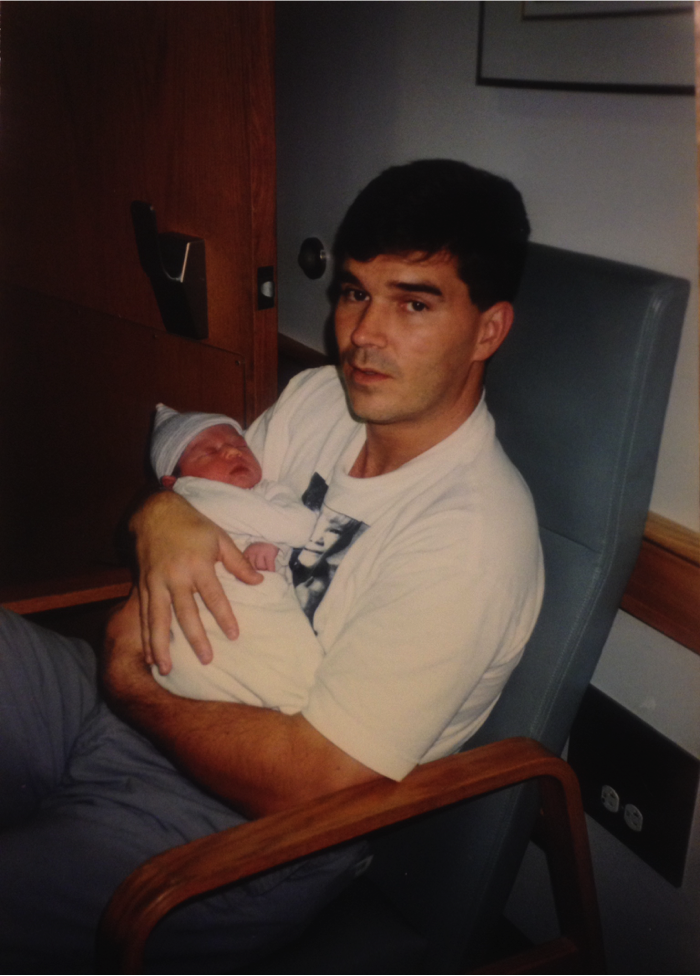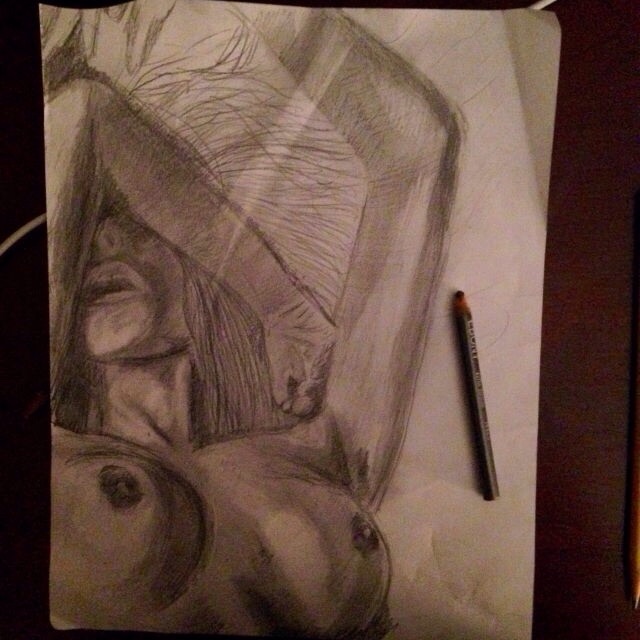Music, Sound, and Silence in Buffy the Vampire Slayer
“Death is your art—” Spike says, gazing up at the camera as the shot interlaces between the alleyway where he kneels at Buffy’s feet, and the New York City subway car where he straddles the body of the Slayer he has killed. “You make it with your hands every day” (Fool For Love, 05.07). In just one interpretation of this phrase, Spike’s words can be read as Joss Whedon’s self-referential humor at its finest: an indicated awareness of the fact that many of his finest artistic moments as a writer and director have occurred during his dealings with loss and dying. Death is art in Buffy The Vampire Slayer: the most powerful aesthetic and narrative achievements of the show routinely exploit and explore the audience’s fear of it, wish for it, and reactions to it. But death also has a gendered significance, particularly in its thematic relationship with the body, and the various representations of death through music in Buffy reveal a recurring tendency to aestheticize the corpses of women. In the course of the show’s progression, the interactions between gender, aesthetics, and the body become increasingly nuanced, as male bodies are repeatedly re-coded as feminine, and one-dimensional objectification of the female corpse gives way to more complex visual and auditory portrayals of women’s bodies. Nevertheless, despite substantial developments in the nature of bodily aestheticizing over the course Seasons 3 through 5, the medium of sound remains a primary site for observing the gendered implications of death in Buffy the Vampire Slayer.
In “Passion” (02.17), the narrative trajectory of Buffy is altered irreversibly with the murder of Janna Kalderash (better known throughout the series by her alias, Jenny Calendar). In contrast to the campier camerawork that characterizes early Buffy episodes like “Witch” (01.03) or “Prophecy Girl” (01.22), “Passion” is a highly stylized 40 minutes of television: the power of a villainous narrative voiceover is used in the series for the first time, and scenes are often filmed through windows or at a distance, evoking voyeurism and representing, through Angelus, the objectifying force of the male gaze. This precision of the camerawork, as well as the distinctive and (heretofore) unique use of the voiceover, allow the episode to establish a more sophisticated and consciously aesthetic tone. In other words, while many episodes of Buffy, and especially many early episodes, are wry, self-referential, and humorously aware of the horror genre clichés that they alternately rely upon and subvert, “Passion” is one of the first to treat both Buffy’s storyline and the horror genre with a graver sense of respect, focusing specifically on the very real emotional consequences that supernatural tropes like vampires can impose upon the lives of the characters. These artistic decisions are reflected in the episode’s construction: the heightened sense of aesthetic precision that characterizes “Passion” not only reflects an ongoing shift in the storyline that began around “Innocence” (02.14), when the writers began to engage more seriously with the conflicts of the characters rather than merely satirizing the trials of later adolescence, but also foreshadows a central theme of this episode: the artistry with which Angelus regards death and dying.
Near the end of “Passion,” death, gender, and sound intersect in one of the most horrifying and well-composed moments of the series, when Giles finds Janna’s body placed carefully amidst rose petals in his bedroom as “O Soave Fanciulla” from Puccini’s La Bohème plays on in the background. The calculated beauty of this scene is largely contingent upon the auditory decisions made by Angelus in the narrative, and by director Michael Gershman in the writing process. The rising operatic score formulates an image of tragedy deliberately characterized by artifice: the audience is already aware that Angelus has murdered Janna, and so the music indicates that this rose-strewn setting has been created specifically for Giles. This conscious sense of constructionism, in addition to heightening the audience’s sense of dramatic irony, also reinforces the artistic nature of Janna’s death. Angelus places Janna among the rose petals for Giles’ to look upon, revealing through music that he has manufactured this scene, and hoping to incite rage, grief, and fear in those who knew and loved her. Similarly, Gershman places actress Robia LaMorte in the scene for the emotional purposes of the audience: the music causes us to feel intense sorrow and, in all likelihood, a heightened sense of respect for the aesthetic talent that Gershman demonstrates in this beautifully constructed scene. Together, the director and the vampire create a simultaneous narrative and directorial aestheticizing of a woman’s corpse: Janna’s agency is lost not only in the philosophical sense discussed by academics such as Thomas W. Laqueur (who outlines the socially driven subject-to-object transition that accompanies the shift from “person” to “corpse”), but also in her corpses’s status as an object of the male gaze. She has become a set piece in a much larger scene, her dead body reduced to just another one of Angelus’s (or perhaps Gershman’s) masterpieces. Through its evocative beauty and its implications of artifice, “O Soave Faniciulla” sets the scene for both Angelus and Gershman’s aestheticizing of Janna’s death, becoming a primary device by which the objectification of her body is made possible.
Interestingly, though, the aestheticized corpses of Buffy are not always anatomically female, and by the end of Season 2, it becomes clear that the death of any body that has been coded as “feminine” through its relationship with conventional gender roles is susceptible to objectification in the series. The character of Angel presents one such example of a feminized male body, and “Close Your Eyes,” Buffy and Angel’s love theme for the first two seasons of the show, is one of the primary means through which Angel’s death is aestheticized. The only point in the series that this song achieves crescendo occurs in “Becoming” (02.22) when, caught frequently between her obligations as Slayer and her desires as a woman, Buffy makes the first of the many terrible decisions that will come to shape her later adolescence, and puts a sword through her lover’s heart “because [she] had to” (Selfless, 07.05). Musically representing this crucial rite of passage, “Close Your Eyes” operates as an auditory representation of the emotional and physical decisions that Buffy must make at the expense of Angel’s life and body. Even the song’s title, which echoes Buffy’s final words to Angel, reinforces this dynamic: she performs the actions that shape the narrative, while Angel, the subject, is acted upon.
“Close Your Eyes” therefore seems to negotiate an entirely new relationship between music, gender, and the body: it emphasizes rather than subverts Buffy’s narrative agency, suggesting a reversal of the musical treatment of gender that “Passion” demonstrated just five episodes earlier. But this reading of Season 2’s love theme is complicated by the fact that Angel’s body is consistently coded as feminine; the aestheticized nature of this death, therefore, is not very different from Janna’s after all. In “Surprise/Innocence” (02.13/14), Angel—rather than Buffy—experiences the “death by sex” trope: a gendered horror cliché wherein the woman dies as either a direct or indirect consequence of having sex. While Buffy certainly suffers as a result of her sexual decisions, her grief is reactionary. She does not die, but instead mourns for Angel, whose loss of his soul constitutes a sort of death of the self. In addition to representing this typically female trope, Angel is also re-gendered through his fulfilling of the virgin/whore dichotomy, wherein he once again performs a conventionally feminine role. His abstinence allows him to retain his soul, any expression of sexuality may cause him to revert to the evil Angelus. Angel’s agency and narrative complexity are both greatly compromised by this binary characterization: while he is generally permitted to function only as either a gentle love interest or a misogynistic villain, and his status as either, like that of the virgin or the whore, is determined through his acts of physicality. In his unconventional fulfillment of these two traditionally female tropes, Angel is clearly and repeatedly coded as female throughout the season. But the feminization of his body is demonstrated most physically through music: most notably during the crescendo of “Close Your Eyes,” when he is stabbed as the song reaches its climax. Angel’s body serves a site of penetration in this scene, and evokes a visceral inversion of our conventional understandings of gendered and sexual roles. It is consistent with the show’s treatment of gender, then, that Angel’s death is musically aestheticized in a manner similar to Janna’s in “Passion.” Anatomically male but thematically feminine, he becomes a symbol of beauty and a source of emotional evocation: as the haunting, fragile strains of “Close Your Eyes” intensify, forming a beautiful auditory climax, Angel’s dying body forms the aesthetic centerpiece of one of Whedon’s earliest moments of significant artistic achievement in the series.
“Hush” (04.10) features a similar re-gendering of a male body, and the episode’s musical score once again aestheticizes the death of this female-coded body. “Hush” features a distinctive examination of the communicative limits of language: in the first 17 minutes of the show, characters frequently encounter the frustrations of verbal socialization, but the remainder of the episode is entirely devoid of speech, and a sinister language of music and bodies informs the narrative instead. When the Gentlemen carve out their first victim’s heart, nature of their actions—penetrative, physical, violent, and precise— allows this action to be easily read as rape. It is a surprising shift in traditional media representation, then, that the subject upon whom such an act is performed is a young man. But the male body here is once again coded feminine: it functions as a subject to be acted upon, and a site for the Gentleman’s penetration. As is the case with Angel, the feminine physical coding of the victim is reinforced through the musical score, which reaches a screeching climax as his body is violated.
While the music of “Hush” genders this victim’s body, recoding it as feminine by creating an auditory climax that parallels the visual implications of rape that the Gentlemen suggest, it is the absence of dialogue that aestheticizes this death scene. The only audible sounds that accompany the gruesome procedure are those of the musical score, and the Gentlemen’s actions are made all the more invasive by their victim’s inability to scream. The death of the victim is thereby devalued through a singularity of sound: the music becomes increasingly more chaotic, but without any of the accompanying verbal expressions of pain that the victim, through his body language, is clearly attempting to emit, the auditory nature of the scene feels incomplete and disturbing. The victim’s body of is no longer able to verbally respond to the act of its own dying, producing a distinctly uncanny effect (especially considering that the music in Buffy very often augments dialogue between characters). Once again, dead or dying bodies in Buffy the Vampire Slayer are both gendered and aestheticized through the show’s use of sound. The score re-genders the male body by reinforcing the notions of sexual climax and penetration through its grating crescendo, while the absence of any noise other than music in this scene provides a vivid artistic depiction of the horror of the death of a body that has been denied the opportunity for verbal expression.
Finally, in the Season 5’s “The Body” (05.16), a female corpse once again forms the primary thematic intersection between death and sound. The most distinctive element of the “The Body” is the episode’s complete lack of score, which, in conjunction with the natural cause of Joyce’s death, creates a sense of realism that distinguishes the episode from many of the series’ more openly supernatural representations of death. Rhonda V. Wilcox argues compellingly that this sense of realism is precisely what enabled so many critics laude this episode above other similarly well-composed episodes of the show, citing specifically many the general critical consensus that the appearance of a vampire—the only overtly supernatural element of the episode—was the single flaw in an otherwise excellent episode.
Following Wilcox’s theory that realism is synonymous with “quality television” in the realm of popular aesthetics, and considering that the realism of “The Body” is in large part determined by its absence of music, female death in Buffy has once again become aestheticized through sound—but this time, to a very different effect. Rather than using rising music gloss over the gruesomely physical connotations of a corpse, or a jarring dissonance to drive home the horror of a voiceless death, “The Body” uses its absence of a score to emphasize the sounds surrounding Joyce’s body: the crack of her rib, the sound of the zipper on the body bag, and clipping of scissors cutting through her blouse. These sounds elicit a very different understanding of death from the audience: while the beautiful climaxes of “O Soave Fanciulla” and “Close Your Eyes” allowed us to distance ourselves from the narrative by treating the deaths of Janna and Angel as moments of beauty, the scoreless nature of “The Body” refuses to reduce Joyce’s corpse to an aesthetic achievement. Unable to find an emotional catharsis in the constructed beauty of music, the grief that accompanies death is imposed instead upon the natural sounds of the body, and the tragedy of Joyce’s loss becomes rooted in the mundane and unsettlingly visceral noises that surround the act of dying. Although deliberately selected by Whedon (and therefore undeniably furthering a carefully constructed artistic vision of death), the absence of music in “The Body” demonstrates a treatment of the female corpse that is far more nuanced and humanizing than many of its predecessors. In all of the scenes that emphasize everyday sounds over a carefully constructed score, Joyce’s corpse functions not as a prop or a set piece, but as the central focus of an episode that thoughtfully considers the emotional and psychological consequences of physical death through the body of a beloved female character.
Sound is just one of the many aesthetic forces used to construct representations of death (a theme upon which this show about vampires demonstrates an unsurprising fixation), but Whedon’s heavy reliance on wit and dialogue make musical, silent, and scoreless episodes of Buffy all the more daring. The episodes that use the aesthetics of sound in the riskiest and most unconventional ways are all placed in crucial points in each season’s respective narrative arc. “Passion,” in addition to showing the first death of a major character on Buffy, pushes Angel past the threshold of forgiveness in the eyes of the Scoobies, thereby necessitating his eventual death. “Becoming” similarly propels Buffy beyond the bliss of adolescence, drawing her into the post-traumatic territory of young adulthood, where she arguably remains for the duration of the series. “Hush” is the episode wherein Buffy and Riley begin their romance and learn truths about one another, and features the first interactions between Willow and Tara. “The Body” marks the major turning point in Buffy’s family life that arguably leads directly to her sacrifice in “The Gift” (05.22).
By positioning these daring “sound” episodes at the site of narrative catalysts, Whedon himself has emphasized the importance of music and silence in Buffy. Rather than compromising precarious instances of artistic and auditory experimentation by inserting them into inconsequential points in the seasonal arcs, he has consistently used their narrative positioning to compel audiences to engage with themes of death, gender, and physicality through the medium of sound. And of course, as these various forms of music, sound, and silence all act alternately as both facilitators for and impediments of communication in Buffy—paralleling the show’s representations of death in their simultaneous fragmentation and unification of communities—it is unsurprising that their respective instances of heightened relevance all find a particular site of observation in the body. The first five seasons of Buffy the Vampire Slayer demonstrate a complex and always- evolving treatment of women’s bodies: although music in earlier episodes such as “Passion” provided a singularly aestheticized set of representations, the scores of episodes like “Becoming” and “Hush” both complicated the series’ treatment of gender by re-coding male bodies as feminine. By the time “The Body” was aired, the writers of Buffy had used both the presence of “ordinary” sounds and the absence of musical score to negotiate a fragile truce between the show’s feminism and its representation of female corpses. In each of these instances, the use of sound in Buffy the Vampire Slayer acts as a primary lens through which these aesthetic and bodily shifts can be observed, and provides detailed insight into the show’s treatment of gender and death.
Works Cited
Kociemba, David. ““Over-identify Much?’ Passion, “Passion,” and the Author-Audience Feedback Loop in Buffy the Vampire Slayer.” Slayage. Accessed May 9, 2015.
Wilcox, Rhonda. Why Buffy Matters: The Art of Buffy the Vampire Slayer. London: I.B. Tauris :, 2005.



Recent Comments